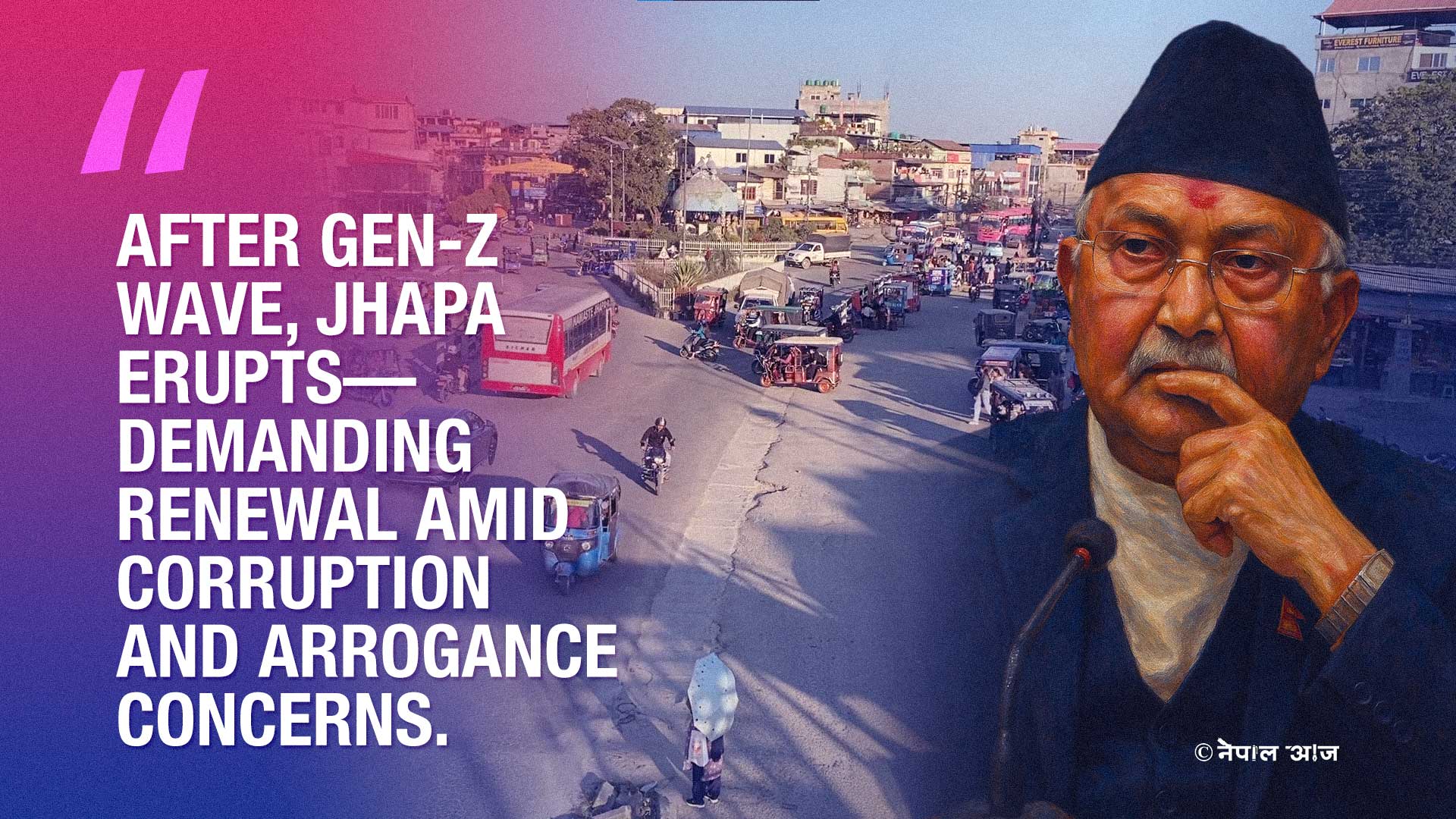Oli in crisis: His own constituency withdraws support, demands retirement and no votes

After the Gen-Z protests of September 8 and 9, a political jolt in Jhapa-5 has shifted from a local disturbance to a nationwide point of debate. For decades, this constituency was regarded as the “unshakeable stronghold” of former Prime Minister K.P. Sharma Oli. But it has suddenly transformed into a landscape filled with public frustration, disenchantment, and sharp criticism. The shift appears neither accidental nor superficial. Voices gathered through continuous on-ground reporting converge on one conclusion: public trust in leadership has eroded, and the question of accountability has now grown larger than party loyalties.
The first major fracture emerging in the voter environment stems from dissatisfaction over unfulfilled promises and uneven development. Citizens have long been raising concerns about local infrastructure, public services, and governance delivery; their grievances remained unaddressed at the political level. As a result, decades-long support appears to be slipping away. Several high-profile projects—from a controversial “view tower” to an industrial zone—became mired in disputes rather than delivering tangible results, further weakening trust. Many residents believe the government failed to prioritize local needs, ensure transparency in spending, or evaluate investment decisions realistically—deepening public skepticism toward political leadership.
At the same time, a growing psychological distance from Oli’s leadership style has become evident. His increasingly tough rhetoric, intolerance toward critics, and the expanding polarization between political camps have left many citizens politically exhausted. Numerous respondents described Oli’s approach as “boastful” or “overconfident”—a sentiment amplified by his reaction to the national climate following the Gen-Z protests. Rising inflation, unemployment, youth migration, and broader political instability have also intensified frustrations toward leadership.
Another factor widely expressed in Jhapa-5 is the demand for generational shift. A long-standing system centered around the same leadership has prevented new political actors from emerging, leaving younger voters feeling sidelined. Many now seek representation, opportunity, and accountability through new political structures. The Gen-Z movement’s emphasis on “responsible leadership” has resonated strongly here, transforming the mood into a structural—not merely emotional—call for change.
Meanwhile, public perception remains harsh regarding several controversies linked to past administrations. From medical procurement disputes to political appointments, older and newer allegations are resurfacing, reinforcing the belief that “the moral credibility of the leadership is in question.” Growing civic awareness about rule of law, investigative institutions, and political accountability has brought these issues back to the forefront—strengthening the public’s distrust.
Projects like the view tower—initially portrayed as symbols of development—have become focal points of criticism in Jhapa. Concerns over investment size, location, utility, and transparency have fueled voters’ conviction that political priorities were misguided. The gap between “spending in the name of development” and “actual developmental outcomes” has widened. Lack of investment in essential services—from hospitals to industry—combined with misaligned budget allocations has cemented dissatisfaction at the core of citizen sentiment.
Overall, the discontent in Jhapa-5 is not merely a reaction to one political figure; it reflects a deeper collision between long-entrenched political culture, leadership style, development philosophy, and an increasingly aware citizenry. Just as the Gen-Z movement triggered a national wave of civic consciousness, the tremors felt in Jhapa are emerging as an indicator of Nepal’s broader political future. How political parties, leaders, local bodies, and federal institutions interpret this shift will influence not only the next election but the future trajectory of Nepal’s political landscape.
The evolving public mood of Jhapa-5 ultimately converges on a decisive question: Is a wave of leadership transition now inevitable, or can traditional political power structures still sustain themselves? If anything, the voices of voters make one point clear—decision-making power has decisively moved into the hands of the electorate, and they are now evaluating political futures not through old formulas, but through new values, new styles, and demands for fresh accountability.




![From Kathmandu to the World: How Excel Students Are Winning Big [Admission Open]](https://www.nepalaaja.com/img/70194/medium/excel-college-info-eng-nep-2342.jpg)